How to Install Artificial Turf: Creating a Lush Oasis
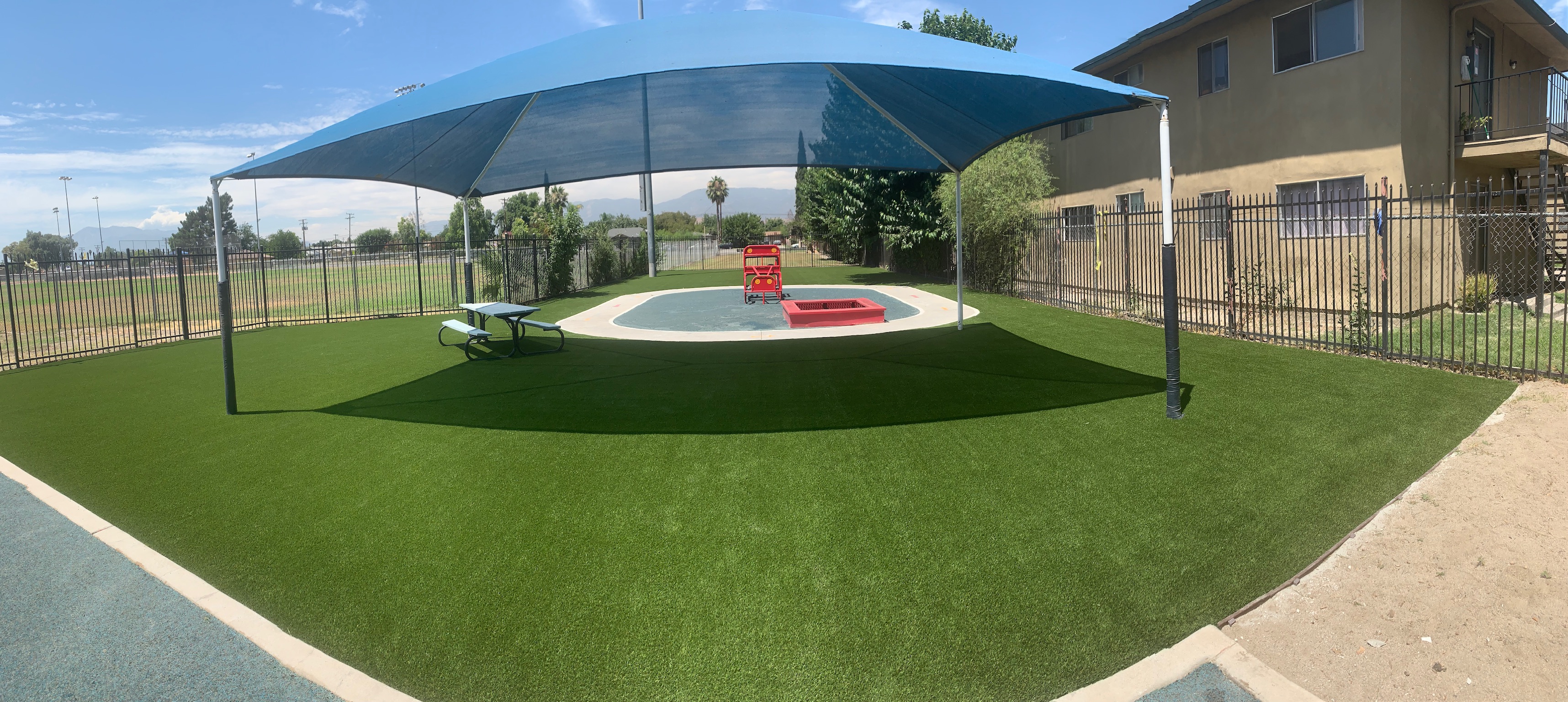
Imagine having a stunning, low-maintenance oasis right in your own backyard. With artificial Turf, you can transform any space into a lush, green paradise. To make the installation process a breeze, follow these 6 easy steps and get ready to enjoy your beautiful artificial lawn.
Step One: Plan & Clear the Area
Before you embark on your project, carefully plan the area you want to cover. Take note of any underground cables or water pipes and ensure they are safely below the digging depth. Next, remove the existing turf to a depth of 2 inches using a turf cutter or spade. Clear away any stones, bricks, or obstacles that might hinder the installation process. Once prepared, lay down a type 1 stone base for a sturdy foundation.
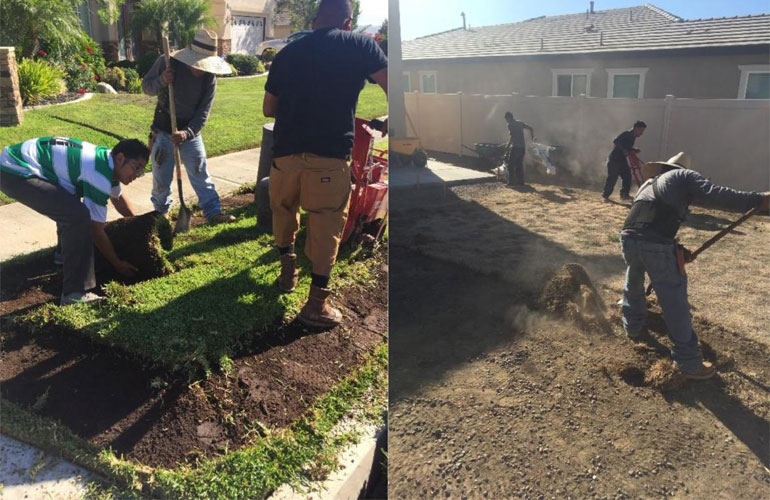
Step Two: Create an Edge
To achieve a polished finish, it's essential to create a defined edge for your artificial turf. If there are no existing perimeters for the grass to butt up against, consider installing an edging system like ags. Using a hammer and a piece of wood, gently knock the edging into the soil, leaving approximately 3cm exposed.
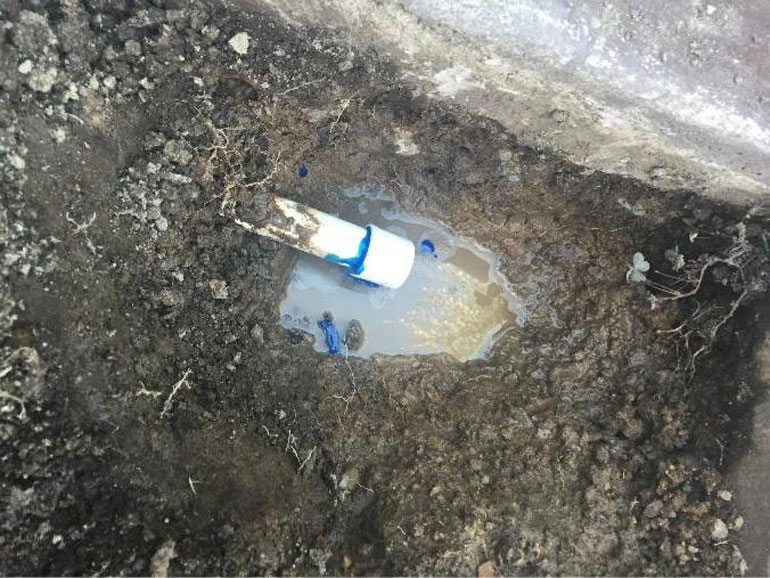
Step Three: Lay the Base
Smooth out the area by applying around 6mm of granite dust. Drag a piece of timber across the application area to ensure a level surface. For areas with larger imperfections (over 20mm), use hardcore to level it out before applying the sand. Keep the sand depth under 20mm for optimal results.
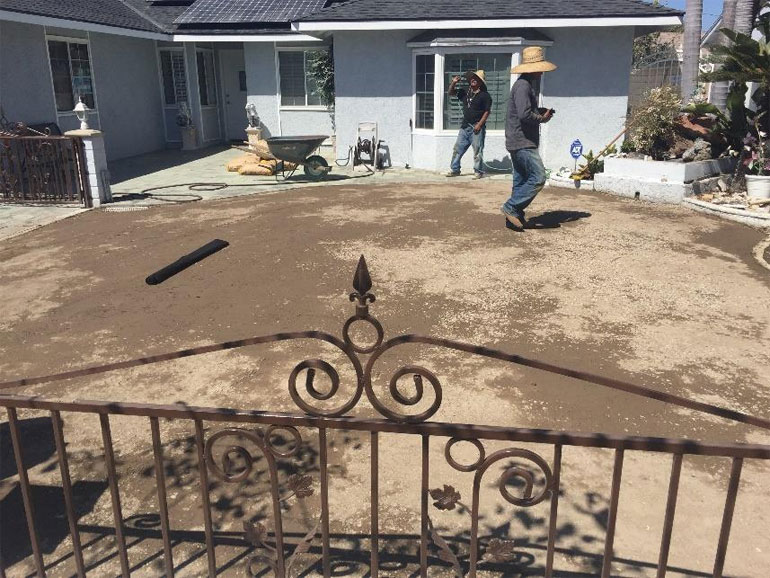
Step Four: Apply Weed Membrane
Once the base is compacted and even, apply a weed membrane to prevent unwanted growth while allowing proper water drainage. Secure the membrane with 4" galvanized steel nails, spaced every 0.75m around the perimeter. Trim any excess membrane from the edges, and if needed, join separate pieces by overlapping them and using ags tape.
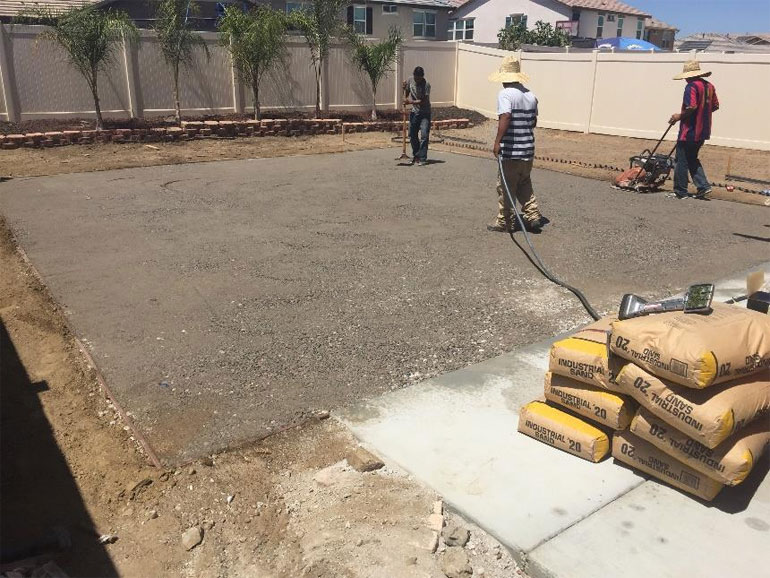
Step Five: Lay the Artificial Grass & Trim Edges
With the base and weed membrane in place, unroll the artificial turf carefully, ensuring it stays in position without disturbing the membrane. For the best visual effect from your home's windows, have the pile direction running toward the house. Trim any excess artificial grass, using the VertEdge as a guide, and make sure to change blades every 3-5 meters for a sharp cut.
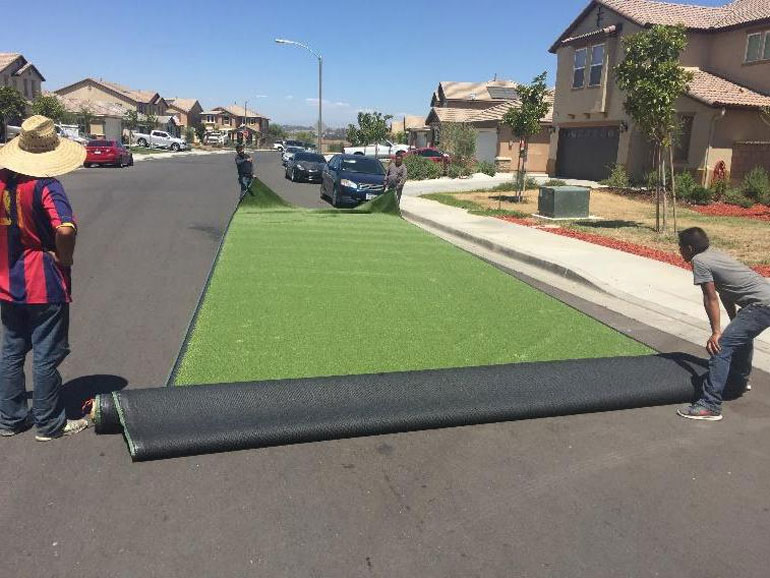
Step Six: Add Finishing Touches
To give your artificial grass a natural appearance and enhance its durability, apply kiln sand to the turf. This can be easily done using a blower and stiff brush or a lawn fertiliser spreader. For optimal results, use 6-8kg of sand per square meter of artificial grass. After applying the sand, brush the pile before, during, and after installation, preferably on a dry day.
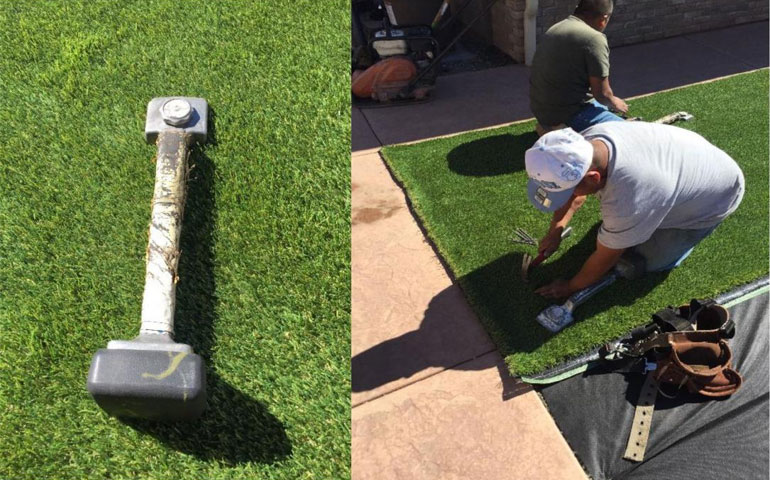
What to Put Under Artificial Turf: A Solid Foundation
When installing artificial Turf over an existing hard base like concrete or tarmac, we recommend using Lazy Foam underlay beneath the grass. Before laying the foam pad, ensure the surface is clean and even. The foam underlay will provide extra cushioning and improve drainage, ensuring your artificial lawn maintains its pristine condition throughout the year.
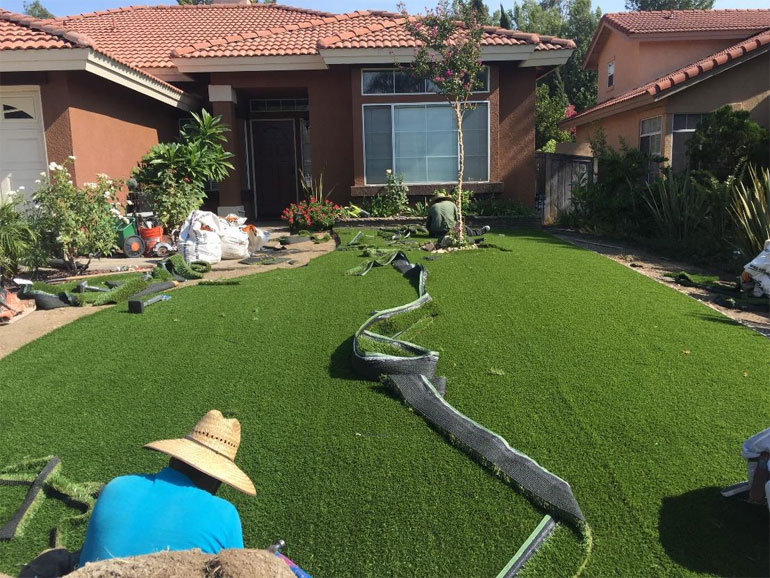
Avoid Laying Artificial Turf Directly on Soil
While artificial Turf can be a game-changer, avoid laying it directly on a soil base. The unpredictability of weather-induced wear and tear can compromise the integrity of the soil and negatively impact your grass installation. Instead, opt for a stronger base that combines MOT type 1 and granite stone 6mm dust for a durable and long-lasting artificial lawn.
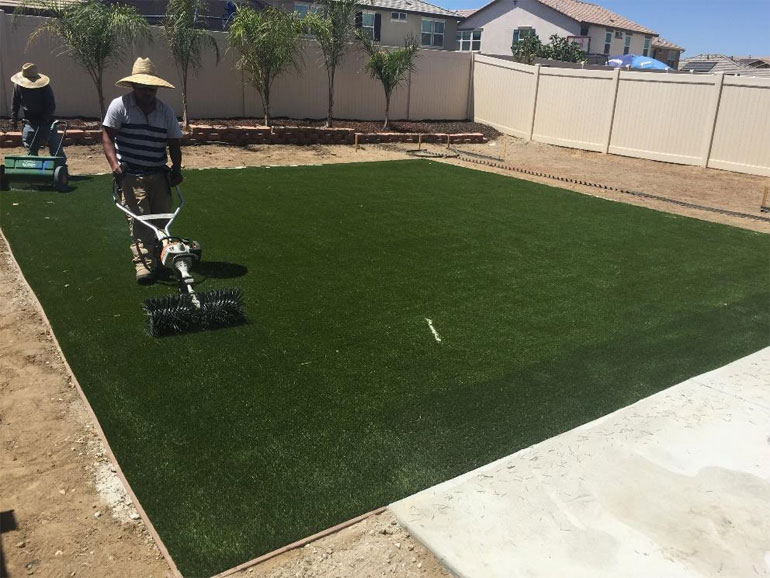
Laying Artificial Turf on Concrete or Decking
Yes, you can lay artificial Turf on concrete or decking. However, to ensure the best results and the longevity of your grass, take necessary precautions. Make sure the concrete or decking is even and has proper drainage. Additionally, use underlay and weed membrane to protect your artificial grass and maintain its pristine appearance.
By following these steps and recommendations, you can easily install artificial Turf and create a beautiful, low-maintenance oasis that will bring joy and relaxation to your outdoor space. Enjoy the beauty of a lush green lawn without the hassle of constant upkeep with artificial grass!
The Advantages of Installing Artificial Turf
Easy Maintenance: One of the significant benefits of artificial turf is its easy maintenance. Unlike natural grass, it doesn't require mowing, watering, or fertilizing, saving a lot of time, money, and effort.
Evergreen Appeal: Artificial Turf maintains its lush green appearance year-round, regardless of weather conditions. It stays vibrant and attractive even during dry spells or harsh winters.
Water Conservation: As artificial turf doesn't need watering, it helps conserve water resources, especially in regions facing water shortages or droughts.
High Durability: Synthetic turf is designed to withstand heavy foot traffic and various weather conditions without getting damaged or worn out. It provides a long-lasting and resilient surface for both residential and commercial use.
Chemical-Free: Since artificial turf doesn't attract pests or weeds, there's no need for pesticides or harmful chemicals, creating a safer environment for children and pets.
Cost-Effectiveness: Although the initial installation cost might be higher than natural grass, artificial turf proves to be cost-effective over time due to reduced maintenance expenses.
Environmentally Friendly: By eliminating the need for mowing and chemical treatments, artificial grass reduces air and noise pollution and minimizes the carbon footprint associated with lawn maintenance equipment.
Pet-Friendly: Synthetic grass is pet-friendly and easy to clean. It allows for easy removal of pet waste and prevents the formation of muddy spots in the yard.
Consistent Aesthetics: Artificial turf provides a consistently neat and well-maintained appearance, enhancing the overall aesthetics of the property.
Increased Usage: With artificial turf, the lawn can be used more frequently without causing damage or creating bare spots. This allows for more outdoor activities and enjoyment.
Fast Drainage: High-quality artificial turf comes with an efficient drainage system that quickly drains rainwater, preventing waterlogging and puddles.
UV Resistance: Modern artificial turf is designed to be UV-resistant, ensuring that it maintains its color and integrity even under direct sunlight exposure.
In conclusion, installing artificial turf offers numerous benefits, including reduced maintenance, water conservation, durability, environmental friendliness, and an evergreen appearance. It is an excellent choice for those seeking a beautiful, functional, and sustainable alternative to natural grass.
